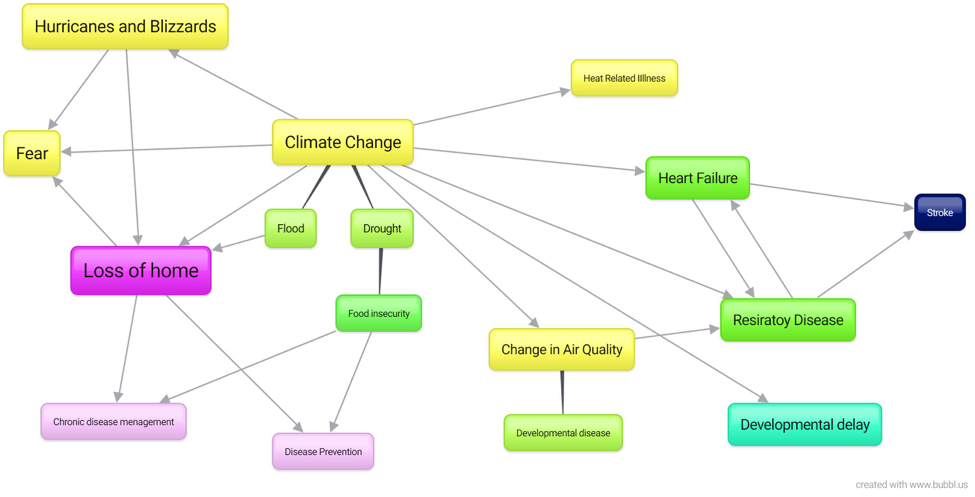
Christie Lewis, Ed.D.
Education
Teaching and Technology for the TikTok Generation in the Midst of a Pandemic
Dr. Christie Lewis used Nearpod to increase student engagement in a flipped classroom.
Project Overview
Child development is a 100 level course that all education majors are required to take. In addition, child development is a general Ed requirement for non-education majors. For this project I created a type of flipped classroom in which students completed independent asynchronous Nearpod‘s for class on Tuesdays and then met in class on Thursdays to complete various activities. Activities include small and whole group class discussions and applying knowledge from the Nearpod into group activities.
Project Planning
This project used the SAMR model of technology integration. Tuesday class time was replaced with an asynchronous Nearpod, which included check for understanding questions and videos to support the audio lecture. Planning for this class was meticulous. Nearpods, which can take hours to create, were prepared well ahead of time. Moreover, in preparing Nearpods, I had to strategically think about what it was that I truly wanted the students to learn about, consider how they would be assessed, and then plan the Nearpod with these specific learning experiences and objectives in mind. I also had to think about how the material from the Nearpods would be applied during in class time on Thursdays.
Nearpods were available for students to complete beginning on Mondays and then had to be completed by class time on Thursday. Otherwise, students would not earn points for Nearpod completion. Earning points for completion also required that students complete the check for understanding questions throughout the Nearpod. This permitted me to check and see if the students understood the material before class on Thursdays. On Thursdays, students would apply the material from the Nearpods via cooperative and collaborative learning experiences. The activities and discussions in class on Thursdays permitted scaffolding to occur with peers. Further, the activities and discussions for the class were supported by Vygotsky’s Sociocultural Theory and Bandura’s Social Learning Theory.
In preparing, I took it to account the recent Covid pandemic and considered the mental health challenges that students may face as well as the learning that students had taken part in for the past year and a half. In other courses, I observed that students often disclosed mental health challenges and discussed lack of motivation, stress, and feeling overwhelmed. I observed from the fall semester how many students discussed how overwhelmed and stressed they felt. Many students during the fall term also verbalized that most of their learning had been either synchronous or asynchronous for the past year. At the beginning of the spring 2022 term, because Chatham moved to a virtual format, I begin using Nearpods in place of synchronous learning on Tuesdays during the first few weeks of the semester. Once it was announced that the university was permitted to move back to classroom instruction, I created a Zoom poll and asked students if they would prefer asynchronous lectures via Nearpods on Tuesday and meeting in the classroom on Thursdays, or if they would prefer meeting in the classroom on Tuesdays and Thursdays. All but one student voted to continue with asynchronous Nearpods on Tuesdays and then to meet in the classroom on Thursdays. It was important to me that students had a voice in how they would learn as I believe in creating a positive learning community that takes student voice into account.
Using Nearpods created more equity for the course. Nearpods permitted more resources for the students as students could go back and review the lectures and videos in the Nearpod at any point in time. Further, with keeping Mayer’s Multimedia Learning Theory in mind, I created a more effective instructional design in the Nearpod. Mayer’s theory dictates learners learn more deeply from a combination of words and images together than just simply words alone. The Nearpods not only provided a visual slide with major points written out but audio from my voice via lecture for each slide. Then, short videos for the most important learning material were given in the form of short videos found from various sources such as Study.com, YouTube, WQED, and other places. This permitted the learner to be introduced to the material via a visual slide with an auditory lecture, and then for the main learning material to be reinforced with a video that included audio. Many students in my course disclosed that they had ADHD (five students to my knowledge) and one student was EL Learner. This model of learning helped to better support these to return to the material again and again, but it also helped the whole class as anyone could revisit the material at any given point in time. Unlike a traditional lecture, students could not only see the visual aids from the lecture but listen to the lecture again instead of solely relying on notes taken during class.
Project Assessment
For this project, I surveyed the students using during week 12 of class. The results of the survey and questions are below. Most the students enjoyed the Nearpods and felt that it enhanced learning as can be seen in the results below. Further, 12 out of 13 respondents or 92.3% of respondents stated that Nearpods should be used for future courses.

Project Reflections and Next Steps
For the most part, the flipped classroom using Nearpods worked for most of the students. Based on feedback from the survey, I think I will continue to use this method of teaching child development as it was effective for most learners. However, I feel that I will need to adjust the length of some of the Nearpods as some of the Nearpods were lengthy. Further, I learned that post/current pandemic students from what I refer to as the “TikTok” generation do gravitate towards nontraditional teaching methods in asynchronous settings. The flipped classroom using asynchronous Nearpods not only permitted a deeper learning experience but also provided more school and life balance to students.













